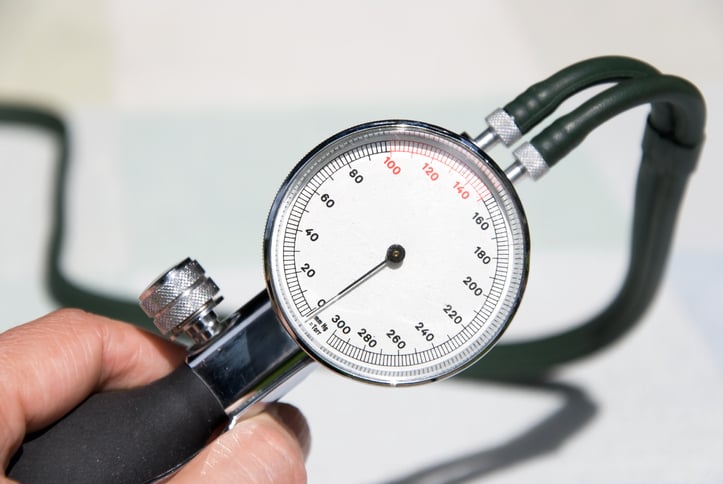
Hypotension is clinically defined as systolic blood pressure below 90 or diastolic blood pressure below 60. Slight variations in these figures are normal, and very fit people may have unusually low blood pressure. So it’s important to take into account the patient’s full condition, not just their blood pressure.
When a patient has other symptoms, such as dizziness or fainting, hypotension may signal a serious or even life-threatening ailment. If you encounter a hypotensive patient, here’s what you need to know to administer proper treatment.
Symptoms Accompanying Hypotension
Diagnosing hypotension requires more than just looking at the numbers on a blood pressure meter. Athletes, very thin people, young children, geriatrics, and people who have just exercised may have lower-than-usual blood pressure, so a small deviation from the norm is not in and of itself a cause for concern. Instead, EMS providers must look at the whole picture. Some worrying symptoms that often accompany hypotension include:
- Dizziness or lightheadedness
- Fainting or passing out
- Nausea or vomiting
- Blurred or distorted vision
- Fast, shallow breathing
- Fatigue or weakness
- Feeling tired, sluggish, or lethargic
- Trouble concentrating
- Confusion
- Agitation or other unusual changes in behavior
Common Causes of Hypotension
Hundreds of conditions and injuries can cause hypotension. The most common include low blood volume, prescription medications, and cardiac disease. Hypotension may signal internal bleeding when a person has a chronic disease, intense pain in the back or abdomen, fever, or other signs of infection. Women who have recently given birth are also at risk of hypotension due to excessive bleeding.
Heart disease that damages the heart or blood vessels can also cause hypotension, as can severe COPD, cardiac shock, and dangerous arrhythmias. When there is hypotension on just one side of the body or accompanied by chest pain, it can signal a heart attack, a partial vessel blockage, a blood clot, or a pulmonary embolism.
Treatment Strategies
In some patients, hypotension is due to dehydration, and so the first line of defense usually involves giving fluids. This may also help if the patient is suffering from an endocrine disorder, medication reaction, blood loss, or anemia. In addition to giving fluids, a comprehensive evaluation and detailed medical history can help identify the cause of hypotensive episodes. As soon as the patient is stable, address the underlying cause of hypotension. For example, some patients may need antibiotics for sepsis while others may need surgery to treat internal bleeding.
Shock always warrants transport, even after the patient is stabilized.
Hypotension and Suctioning
Patients in a hypotensive state may need suctioning when actively bleeding from the throat or mouth, or when an airway obstruction is present.
Be aware that excessive suctioning can trigger hypotension, so never suction the patient for longer than 10 seconds. If the first suctioning attempt fails, withdraw the tubing, oxygenate the patient, and try again.
The Importance of Quality Equipment
The right portable emergency suction machine allows you to quickly protect the airways of all patients, including those in dangerous hypotensive states. Because excessive or inappropriate suctioning can trigger hypotension, it’s important to choose quality equipment that delivers consistent suctioning.
We can help you choose the perfect suction machine for your agency’s needs. For help selecting a unit, download our free guide, The Ultimate Guide to Purchasing a Portable Emergency Suction Device.
Editor's Note: This blog was originally published in February 2020. It has been re-published with additional up-to-date content.
















